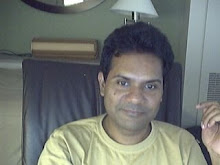Belief Systems in India: The Perpetually Post-modern Macrocosm
The endless definitions, descriptions and epithets for the Indian cultural as well as religious experience have all found their negation given the baffling diversity that has emerged out of our unique experience of dynamics. If the anti-colonial as well as immediate post-colonial mainstream refrain was of ‘unity in diversity’, it then moved to the descriptions of ‘mosaic’ (like under the ‘People of India’ project of Anthropological Survey of India in the 1980s). One term that was much (ab)used to show the co-existence was ‘tolerance’ on the part of an arbitrarily defined mainstream. But then, the endless ethnic clashes including caste based massacres and expressions of communal hatred brought forth the fact that not all here is about any one group’s magnanimity. It is perhaps an endless series of expressions and counter-expressions in the realm of culture, where the dominant and the marginal co-exist. The hegemony of one does not always mean the others moving into oblivion. The continuity and perpetuations always get reinvigorated or at times complemented by new trends, which can range from the destructive to disruptive to the innovative or at times, integrative.
But then, this very pluralism is the raison d’etre for the continuity of the multi-faceted tradition. Be it the concept of ‘ neti’ (this is not the ultimate truth) in classical Sanskritic tradition, the belief in ‘ekam sad, vipram bahudha vadanthi’ (the scholars interpret the same ultimate truth in different ways) under the Vedantic knowledge, the heterodox sections of institutional religions like Islam and Christianity or the simple experience of inter-faith folk and local shrines, even the best of the demagogues and ideologues have to realise-we can just agree to disagree. Indeed, what the Western World has seen as the post-modern in terms of critique of the monolithic definition of ‘rational’ and the respect for difference, could be traced in
The blending or the elite and the popular in most expressions of belief is not something unique to
The outstanding example of the dynamics of belief system interactions is perhaps the existence of communities like Ramdev Pirs who follow both Hindu and Islamic traditions. But such examples are not the only expressions. The clash and collaboration between faiths can be found in most endogenous traditions. One much discussed among the same would perhaps be the clash of the Smarthas and the Vaisnavas. Be it the clash of the ideologies (one of the first being the countering of Sankara’s Advaita by Ramanuja’s Visistadvaita) or the clash of cults and sects (like the antagonism between the Sankara and the Sri Vaisnava order or the clashes between the Bairagis of Ramanandi tradition and the Naga sects who are associated with Sankara’s tradition), they have all shaped much of our need to retain and express our unique identity. Hence being a Vaisnava Iyengar is not merely about following an ideology or mode of worship but is also about having a unique cuisine and a host of unique cultural expressions that would differentiate them from the Smartha Iyer.
The need to assert the uniqueness could take different forms, like the Vaisnavas in Coastal Andhra worshipping Vishnu’s chief lieutenant, Visvaksena during the Ganesa festival or the Ligayats in AP, Karnataka and Maharashtra going in for burial of the dead rather than cremation. The same dynamics is perhaps reflected in Islam of India, where the one time heterodox Sufism has been the force for its rapid spread. A belief that was rejected in the land of its origin due to its incompatibility with the predominant expressions of the faith became the most potent expression of Islamic traditions in
The differences have also been countered by the universalistic forces, and much of the unification under one umbrella has been the work of the predominantly mainstream elitist forces. The unification of most of the Vaisnava traditions in the four Schools-Sri (including the Ramanuja tradition which itself draws its line from the 12 Azhwars), Brahma (including Madhva and Gaudiya schools), Rudra (the Pushtimarga of Vallabh) and Sanak-Sanandan (Nimbarka’s order, which includes the poet Jaideva) is one such effort. Similarly, the Tantric orders of all six Deva traditions present a unique blend of folk magico-religious practices, rituals of non-mainstream ritualists and the Sanskritic Agamic traditions, which purportedly emerge directly from the Nigam or Vedic religious practice. However, even such efforts have not been able to undermine the unique expressions. Much of the cults and orders that emerged beyond the four-fold Vaisnavism (including the Ekkhoron Nama Dharma of Srimant Sankardev in Assam and the Ramanandi Srivaisnavism in Central North India) have found their unique place and have led to unique expressions like the famous Satriya tradition in Assam, the beautiful lyrics of Hitaharivansha tradition in the Braj region or the Sakhi tradition of Krishna worship. Under Saivism, the linkages that have been established by Classical scholars between the Saivasiddhantha and Kashmiri Saivism do not come to obstruct the unique cultural expressions of the traditions in the two regions. Even those shrines and deities that have been metamorphosed to universal icons from local traditions (like Sitala, the Goddess of smallpox in most of Northern and
The encounter of belief in
So janahu jehi dehu janai, Janahi tumahi, tumahi ho jai.
(‘You (God) can be understood only by the person to whom You reveal Yourself-and once anyone knows you, that person becomes You’).
So this search for truth will go on until every
